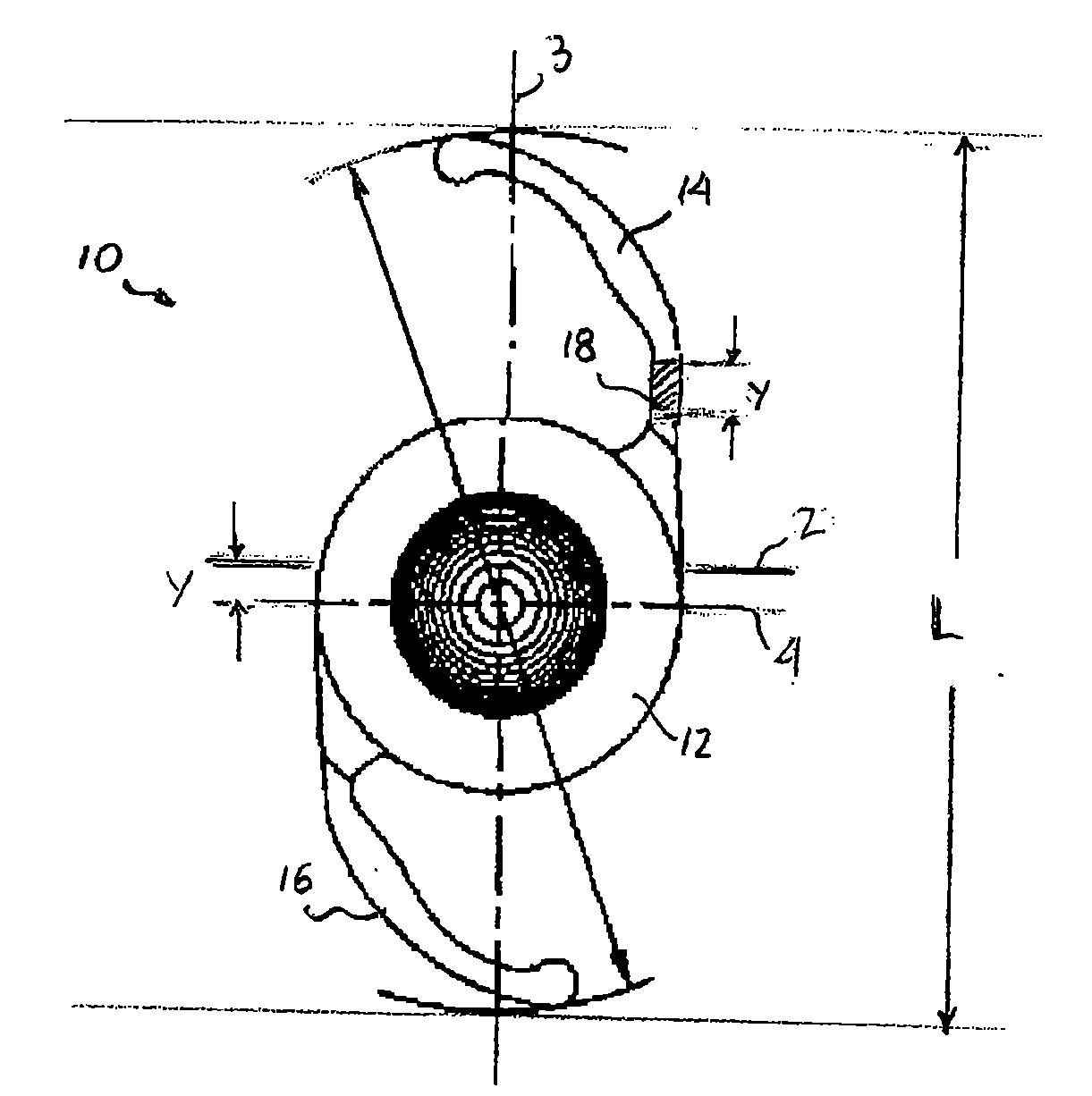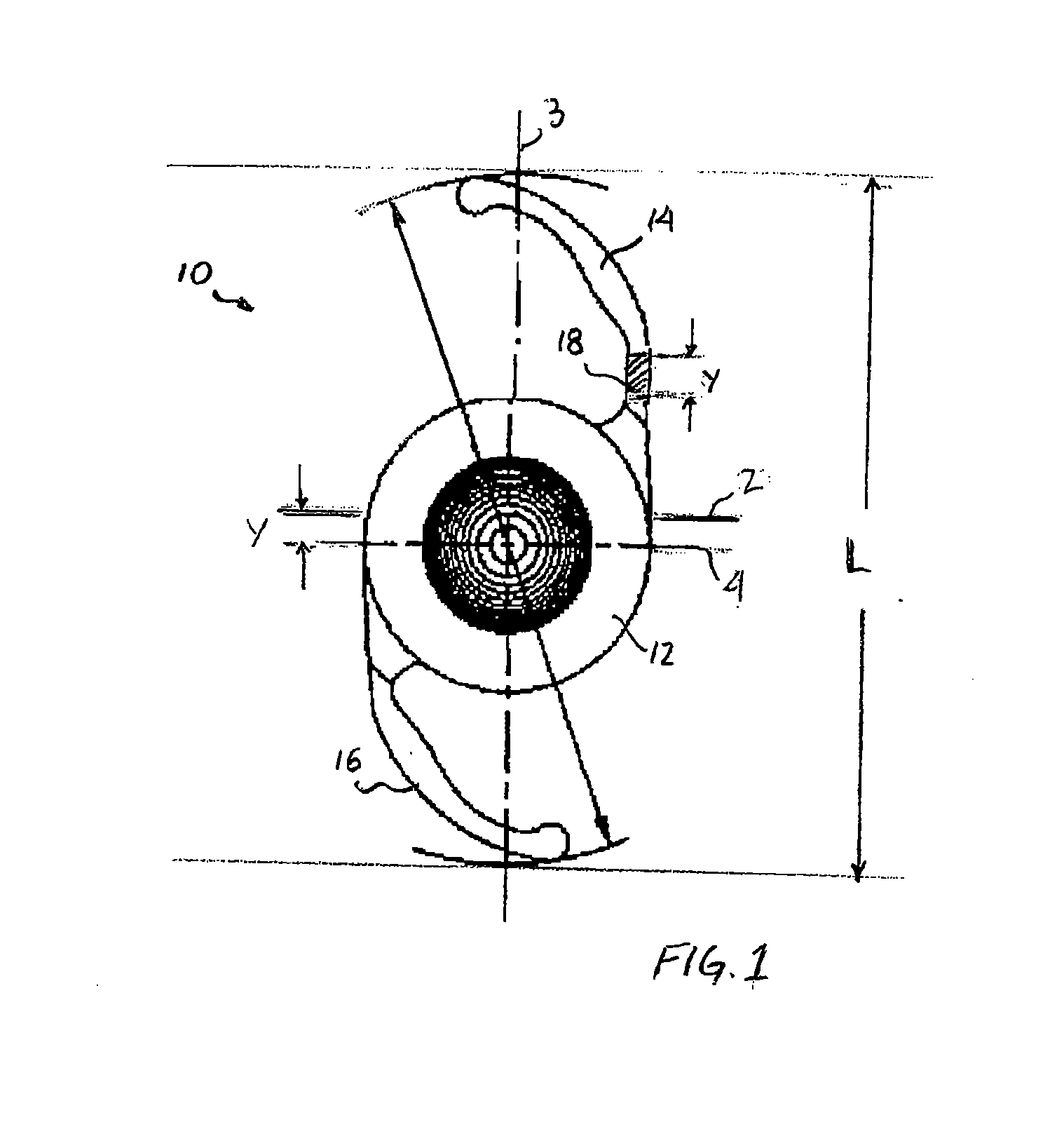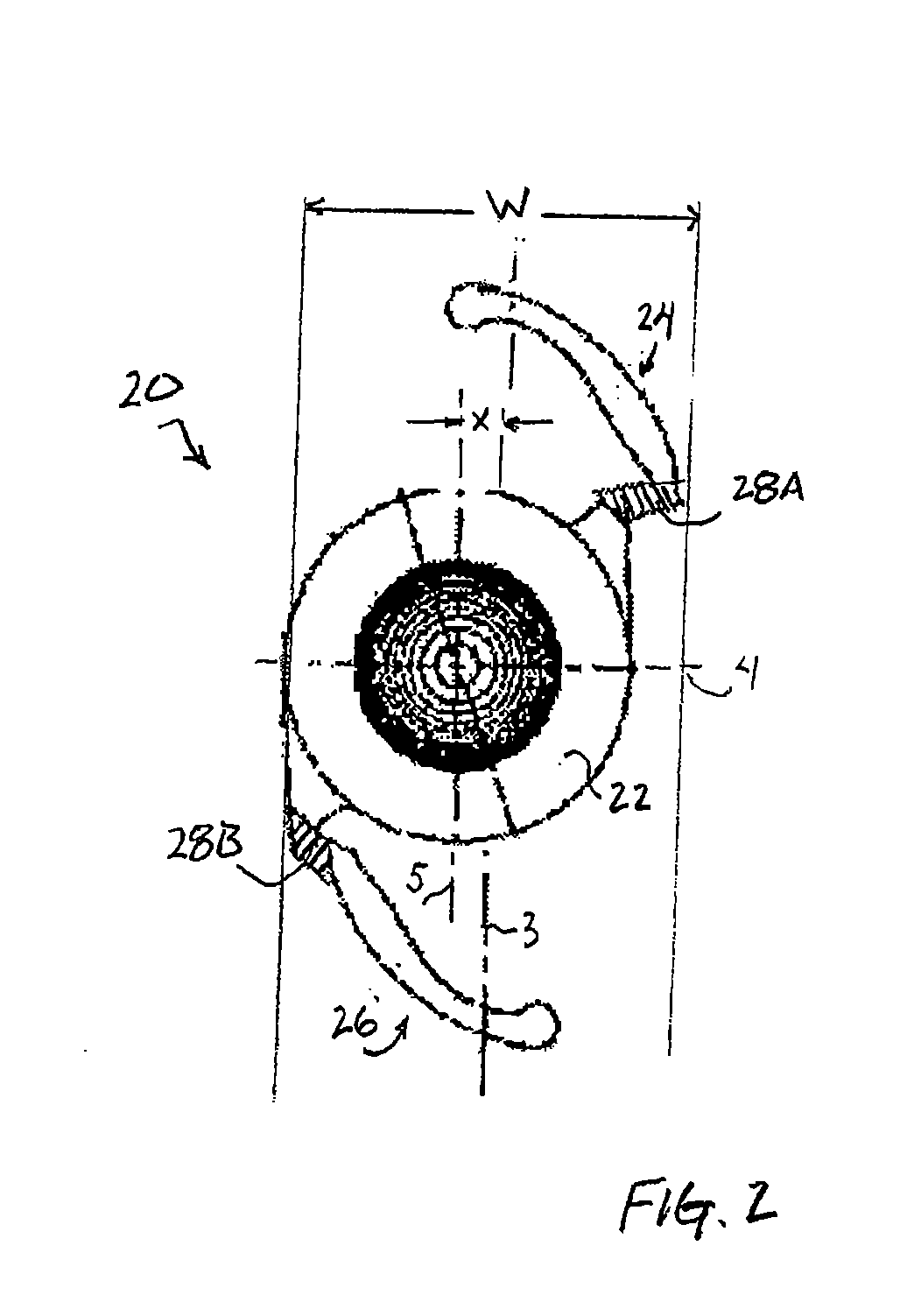Intraocular Lens with Asymmetric Haptics
a technology of haptics and intraocular lenses, applied in intraocular lenses, medical science, prosthesis, etc., can solve the problems of exacerbated peripheral visual artifact perception, and enhanced peripheral vision, so as to avoid dysphotopsia and/or the perception of dark shadows
- Summary
- Abstract
- Description
- Claims
- Application Information
AI Technical Summary
Benefits of technology
Problems solved by technology
Method used
Image
Examples
Embodiment Construction
[0024]The term “intraocular lens” and its abbreviation “IOL” are used herein interchangeably to describe lenses that are implanted into the interior of the eye to either replace the eye's natural lens or to otherwise augment vision regardless of whether or not the natural lens is removed. Phakic lenses, for example, are examples of lenses that may be implanted into the eye without removal of the natural lens. The term “longitudinal” is used herein to refer to the length dimension of the IOL, e.g., in the general direction of the haptics—typically the longer dimension of the IOL. Similarly, the term “latitudinal” is used herein to refer to the width dimension of the IOL, e.g., in a direction generally perpendicular to the haptics—typically the shorter dimension of the IOL.
[0025]FIG. 1 shows an intraocular lens (IOL) 10 having an optic 12, a first haptic 14 and a second haptic 16. Unlike conventional IOLs in which the haptics are substantially identical, haptic 14 includes a longitudi...
PUM
 Login to View More
Login to View More Abstract
Description
Claims
Application Information
 Login to View More
Login to View More - R&D
- Intellectual Property
- Life Sciences
- Materials
- Tech Scout
- Unparalleled Data Quality
- Higher Quality Content
- 60% Fewer Hallucinations
Browse by: Latest US Patents, China's latest patents, Technical Efficacy Thesaurus, Application Domain, Technology Topic, Popular Technical Reports.
© 2025 PatSnap. All rights reserved.Legal|Privacy policy|Modern Slavery Act Transparency Statement|Sitemap|About US| Contact US: help@patsnap.com



